- Login
Critical Spatial Practice
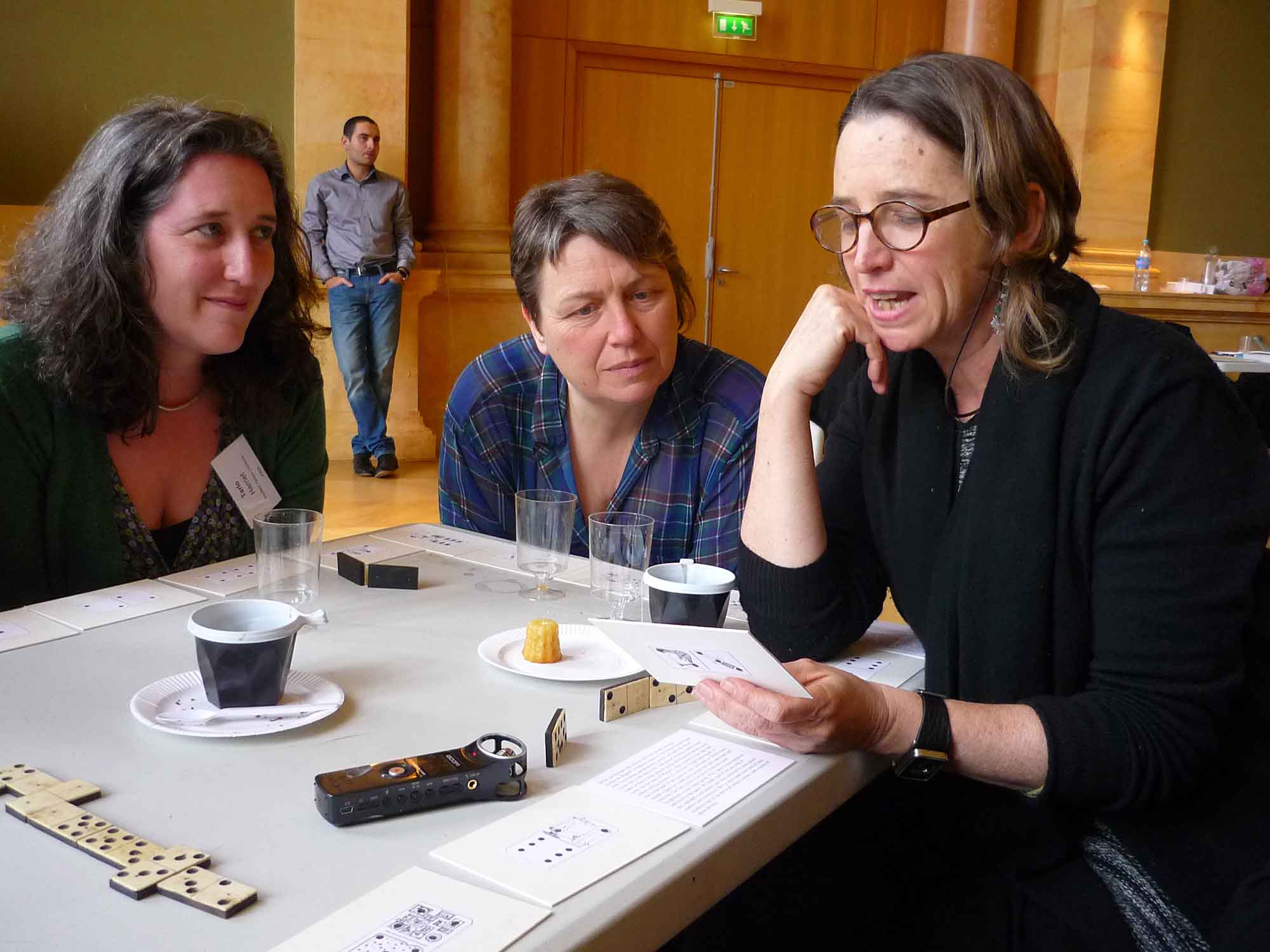
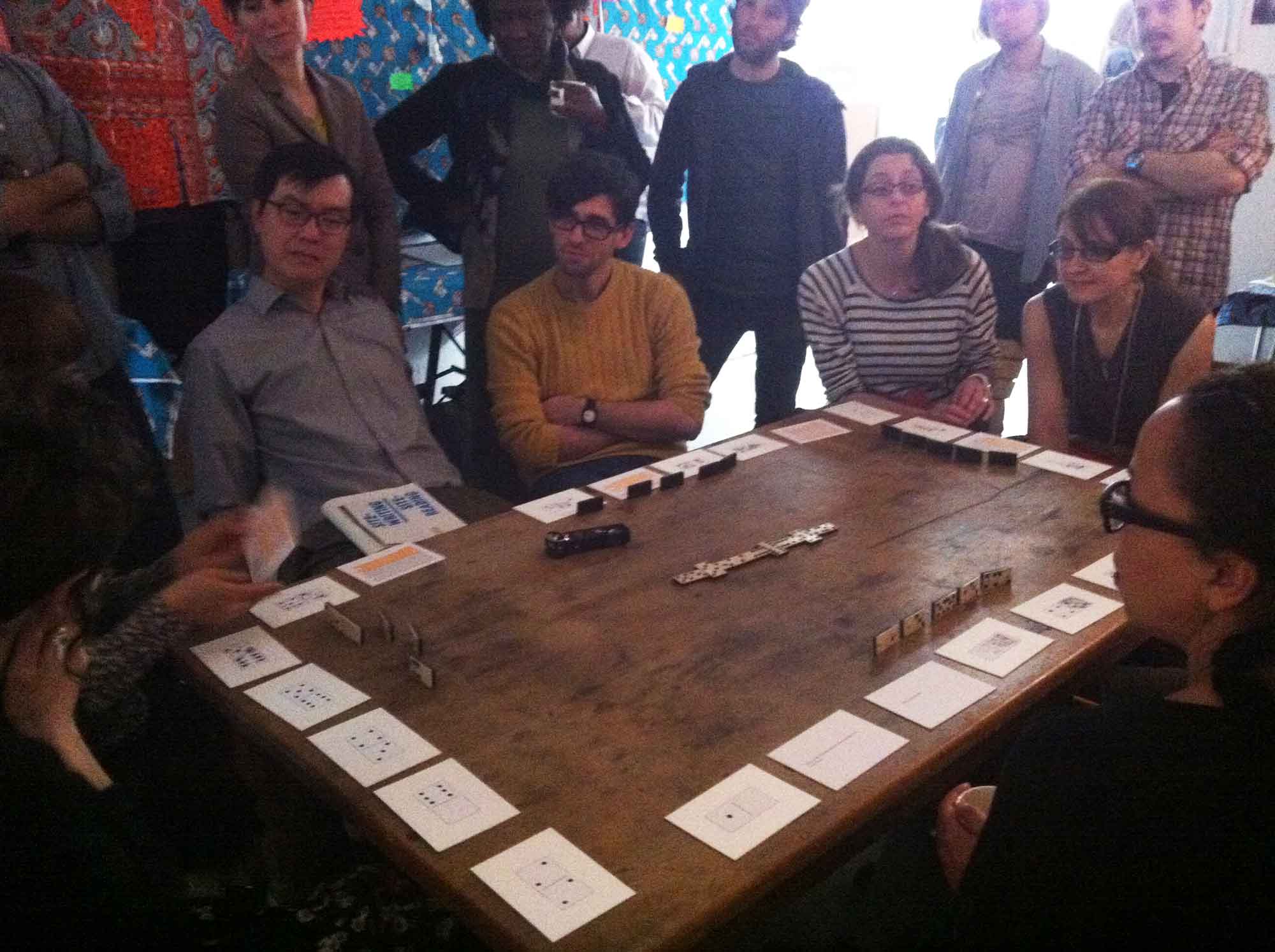
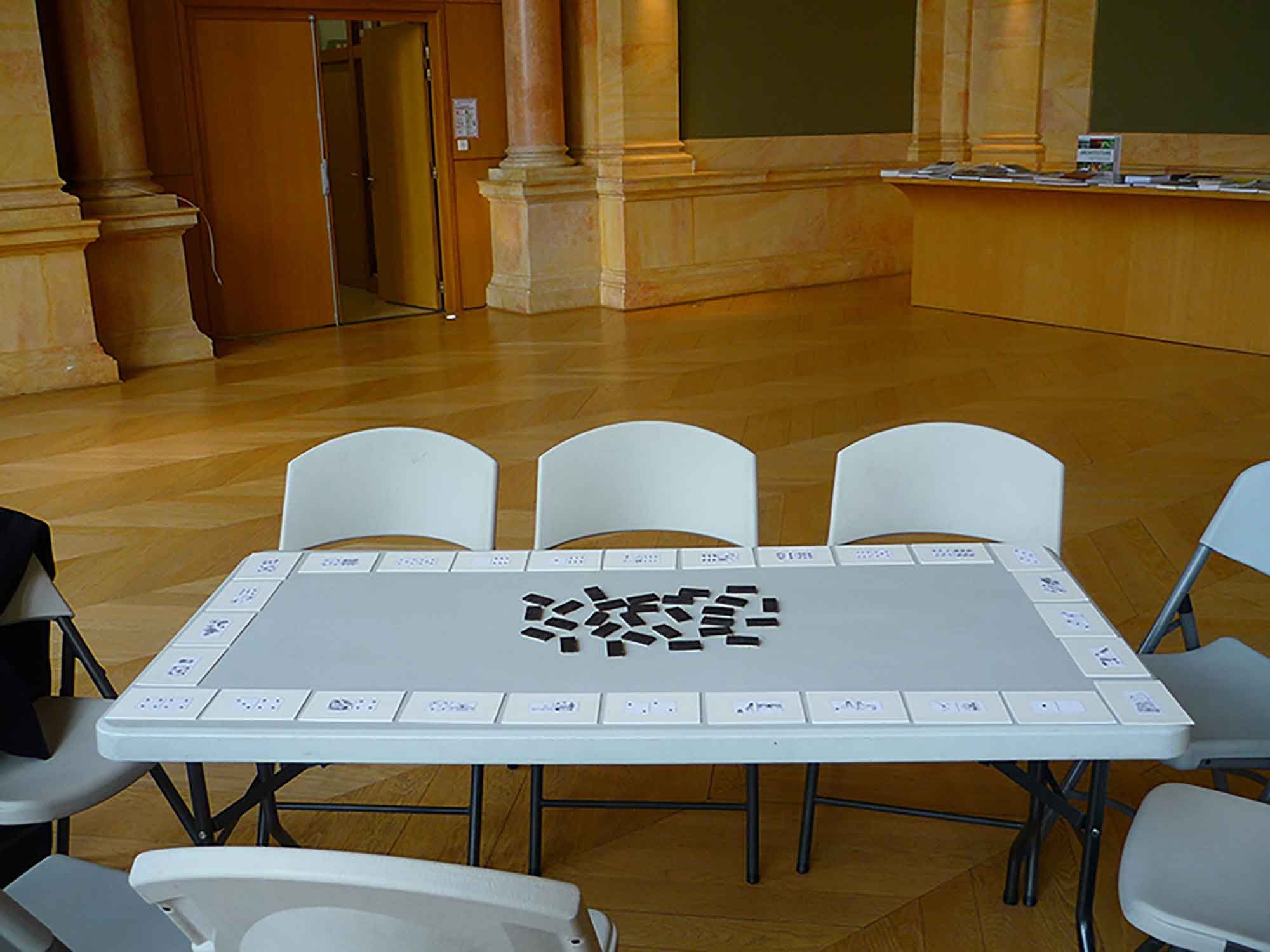
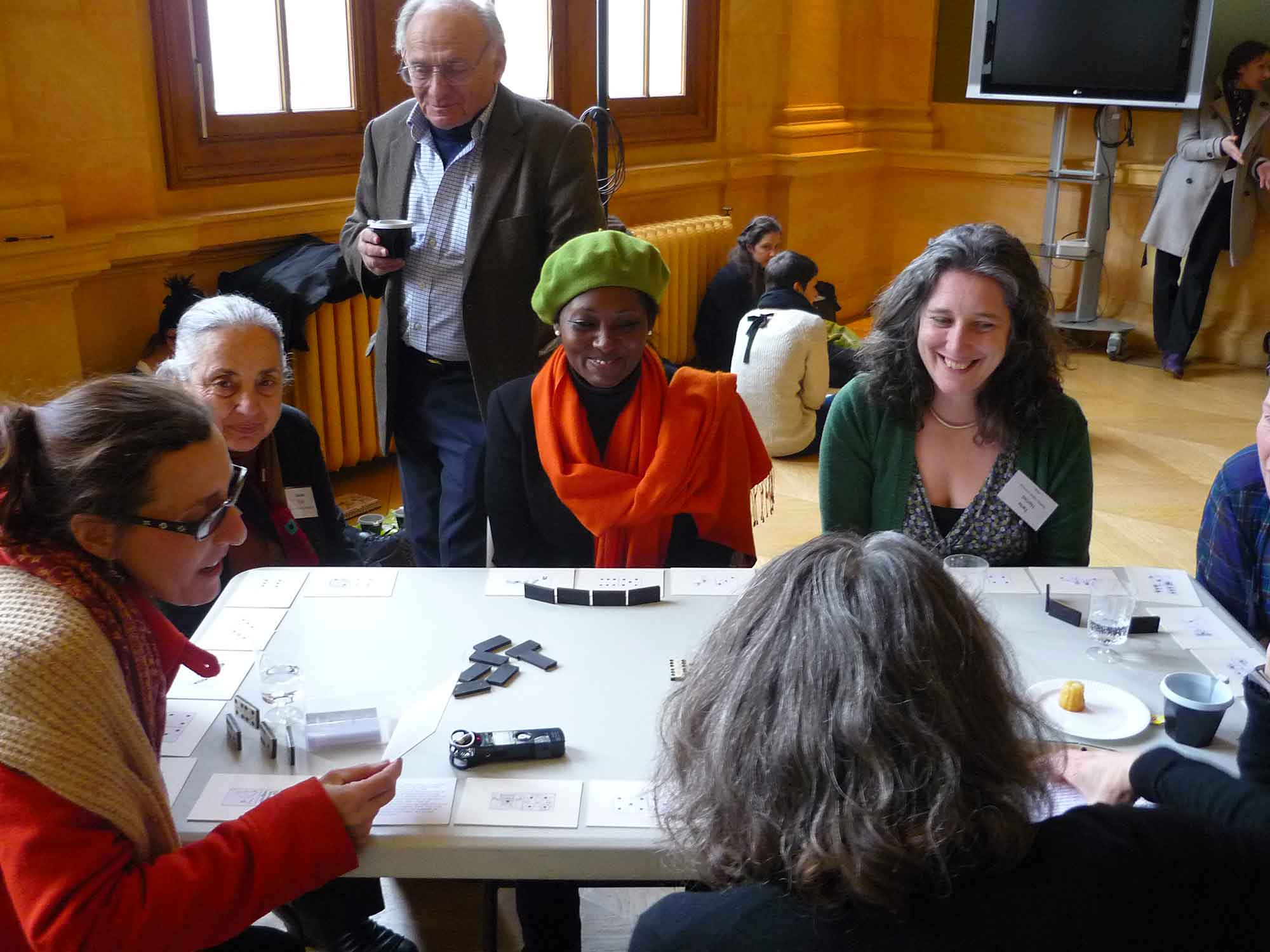
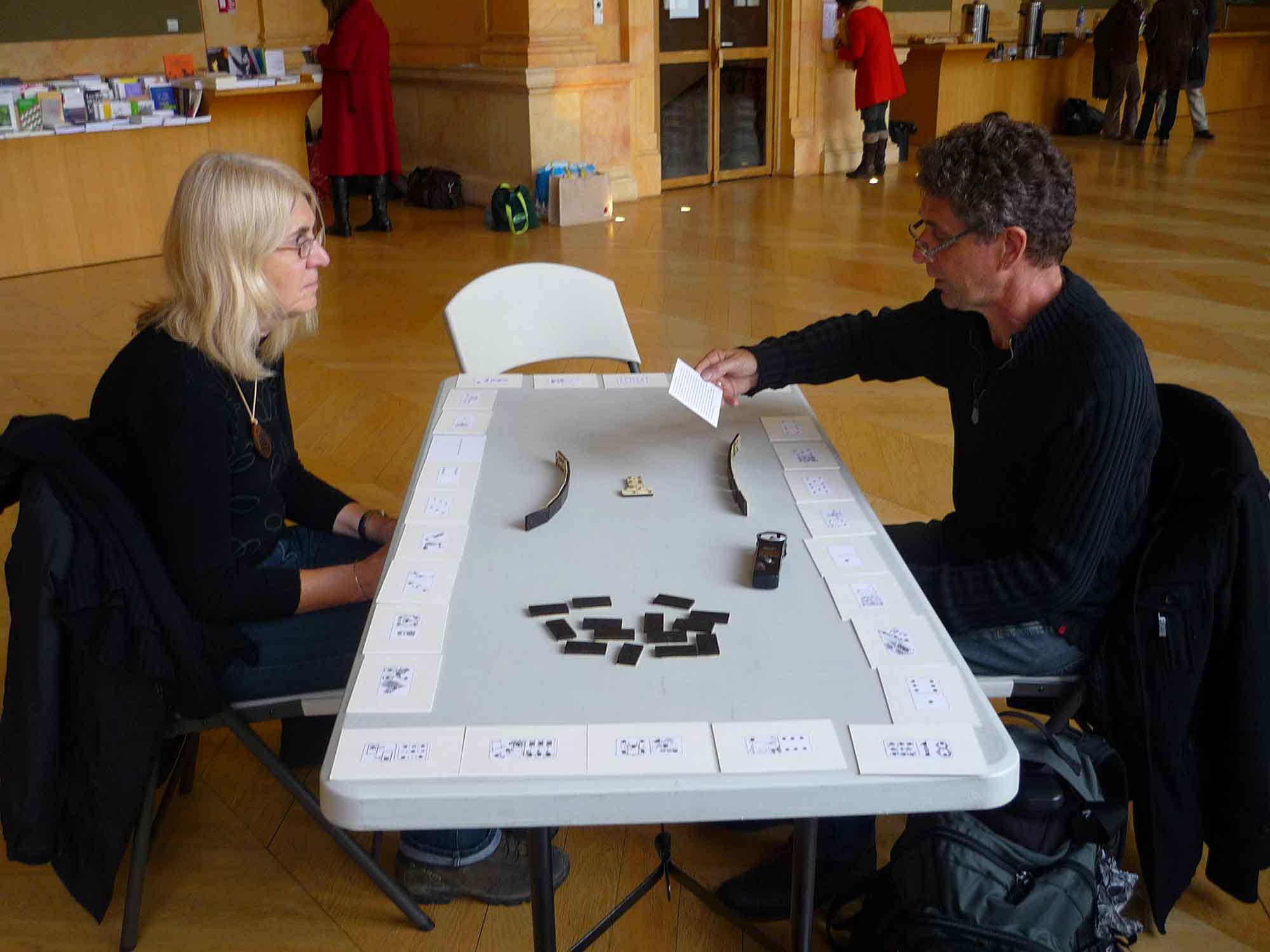
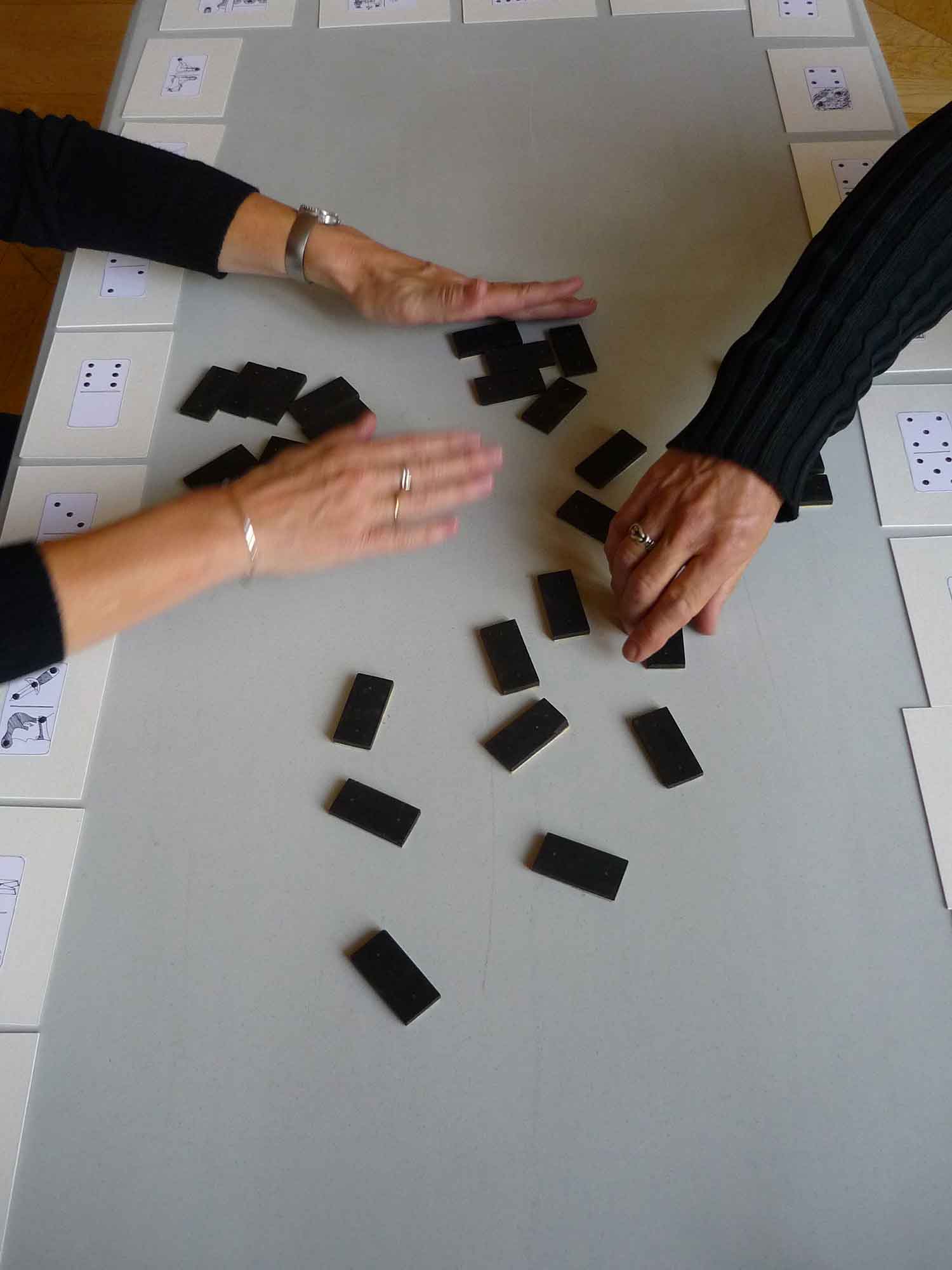
A Game of Dominoes is an artwork that contains and translates stories and memories collected in Brixton during the Anchor & Magnet project residency in 2012-13. A unique domino set featuring drawings from the stories is used alongside a set of cards which contain the questions asked and stories told.
A Game of Dominoes is an artwork that contains and translates the stories and memories of the people we had talked during a 3 month residency in Brixton in 2012-13 initiated by Anchor & Magnet (myself, Barby Asante and Kate Theophilus). The idea for the game came from working with Stockwell Good Neighbours, an elders group who came to our residency space and taught us to play dominoes. The game is based on a game of dominoes but the table for the game is laid with a set of 26 postcard-sized cards placed around the perimeter of the table. Each card has a hand-drawn domino on one side and a printed story or a question on the other. When the player rolls the dice, they must place a domino, pick up the card with the same numbered tile on it, and read the story or question. If they read a question, they must also answer it. The randomised nature of the game means the stories are never read in the same order, and the people playing add to the stories by answering the questions. For example, one of the questions (in the game) is: ‘Where do you come from?’ and in Brixton people took this to mean a reference to a place or country of origin. In another setting, people took this to mean which institution they worked for. The stories from Brixton often describe the current regeneration taking place, and this provokes players in other settings to discuss how they relate to the same issues, but in other places. Through the players speaking the voices, it asks us to think about how we do or do not relate to the questions being asked. A Game of Dominoes represents and acknowledges some of the contestations of this particular site and of research into regeneration.
The game has been exhibited/played at:
The Brixton Exchange, 2012
Art and Geography conference, University of Lyon, 2013
Cities Methodologies, UCL, 2013
Lambeth Treasures, Royal Festival Hall, 2013
The Brixton Museum, Brixton Library/Brixton Museum, 2015-16
To see and hear the game, go to: http://www.anchorandmagnet.org/#!blank/h3917
Katy Beinart is an artist whose work often engages with the public realm and includes installation, public art, performance and socially engaged projects. Her work explores links between material culture, memory, identity and place. She trained as an architect at the Bartlett, UCL and Oxford Brookes University and recently completed a practice-based PhD in Architectural Design at the Bartlett which moves between art, architecture, and regeneration – and salt.
Current and recent projects, commissions and exhibitions include My Life is but a Weaving at Gunnersbury Museum (2018-19), Saltways (2017-18) for the Canal & River Trust, Fabric of Faith (2016-18) for UCL, Brixton Museum (2015-16), Imagined Geographies (with Rebecca Beinart, 2015) for the National Trust, Goute Sel at the 3rd Ghetto Biennale Haiti (2013), and Saltworks at the Lisbon Architecture Triennal (2013).
Her publications include ‘Khlebosolny/Bread and Salt: a time-travelling journey to Eastern Europe (and back)’, Mobile Culture Studies 4: Artistic representations of Migration and mobility (2019); ‘‘My Life is but a weaving’: embroidering geographies of faith and place’, Cultural Geographies 2019, Vol. 26(1), (with Claire Dwyer and Nazneen Ahmed), ‘Salted earth: salt-making as a poetics of mobility and place,’ in Rurality Reimagined, ed. Ben Stringer (Applied Research + Design, 2018), ‘Origination: Journeying In The Footsteps Of Our Ancestors’, in Sacred Mobilities: Journeys of Belief and Belonging, ed. Avril Maddrell, Alan Terry & Tim Gale (Ashgate, 2015)
and ‘Reading between the lines: artistic approaches to the family archive’, The Archive and Jewish Migration, Special Issue of Jewish Culture and History (2014).
She is a Senior Lecturer in Architecture at the University of Brighton.
For further information, see:
@katybeinart
www.katybeinart.co.uk
The game is an ‘event score’ that is transformed by the voices of the players reading the stories, which take on a different accent and performative quality. In part it is a piece of site-writing, which connects the sites it is performed in, and uses methodologies derived from Jane Rendell’s work on site-writing and critical spatial practice. The game acts as a form of détoured critical spatial practice, bringing something new into relation with the Brixton narratives each time it is played.
Alastair Brochie,Mel Gooding, A Book of Surrealist Games (Shambala, 1995)
Ken Friedman (ed.), The Fluxus Reader (Chichester: Academy Editions, 1998)
Ken Friedman, Owen Smith and Lauren Sawchyn (eds), The Fluxus Performance Workbook (performance research e-publication, 2002), Monoskop website: <https://monoskop.org/File:Friedman_Smith_Sawchyn_eds_The_Fluxus_Performance_Workbook.pdf> [accessed 23 August 2017].



































































